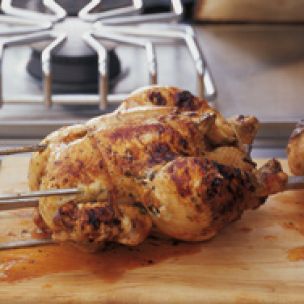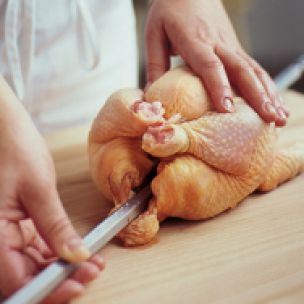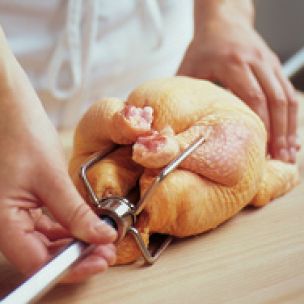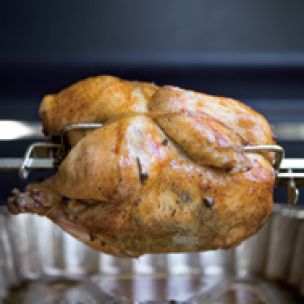Rotisserie grilling, or spit-roasting, is a popular way to cook large cuts of food such as roasts and whole birds. A rotisserie is available as an optional accessory and can be attached to most gas grills and many charcoal grills.

The key to using a rotisserie is to balance food as evenly as possible on the spit. If the food is not well-balanced, the motor will strain and jerk, resulting in uneven cooking, lost juices and undue stress to the motor. Most rotisseries come with a counterweight system that can be adjusted to compensate for the awkward shape of certain foods.

Thread a trussed bird onto the spit through the cavity. Pierce a leg of lamb or roast with the sharp end of the spit and carefully push it through the center of the meat.

Insert the prongs of the fork nearest the handle into the meaty parts of the food. Carefully center the food on the spit and twist the nut on the fork to secure.

Insert the prongs of the fork nearest the handle into the meaty parts of the food. Carefully center the food on the spit and twist the nut on the fork to secure.

Thread the second pronged fork onto the spit and insert the prongs securely into the meaty parts of the food on the opposite end. Twist the nut on the fork to secure it.

To cook food on a rotisserie, prepare a gas or charcoal fire for indirect-heat grilling. Place the spit in the rotisserie mechanism according to manufacturer’s instructions, and, if using charcoal, position the food over the drip pan. Turn on the rotisserie motor and cover the grill. Many foods that are cooked over indirect heat can also be cooked on a rotisserie—the cook times are about the same.











